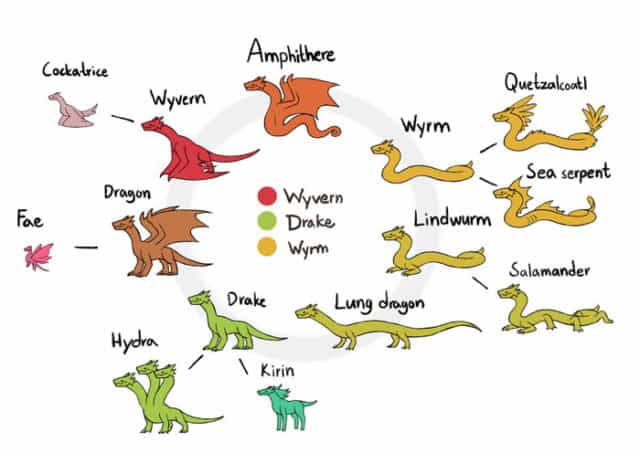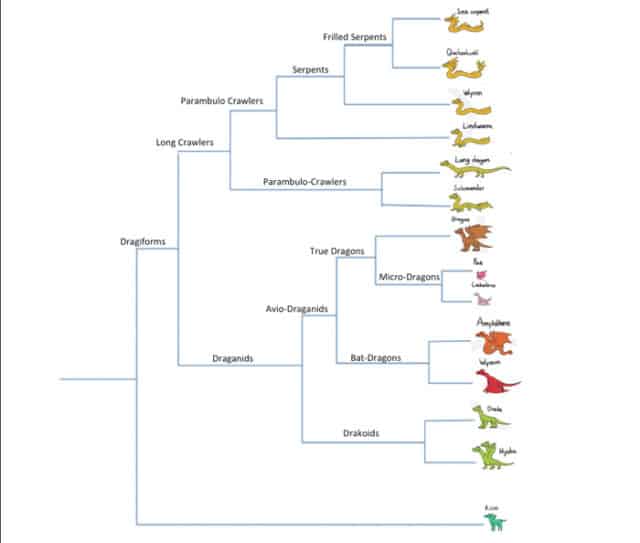
@drakthug drew this handy simple dragon guide. Then biologist Drosophilamelanobastard decided to create a more scientifically rigorous trait bases phylogeny (family tree)
Considering that none of these currently exist, so far as it is known, this is very impressive and seems almost the point obsession. If you’re a D&D fan or simply love fantasy stories then this might be relevant seeing as how many people tend to confuse dragons for their lesser cousins so often. Having appeared in so many cultures throughout the world dragon is a term that is commonly affixed to anything bearing a similar resemblance to the reptilian creatures of myth and legend. Simply the appearance of most creatures on the provided list will have people thinking of dragons, though the cockatrice is a stretch.
There are many different representations of the creatures on the list but one thing is very certain, dragons are very much their own creatures.
Possessed of fully functioning wings, forelegs and hindquarters, a large, functional tail that is not prehensile in most forms, and a long, powerful neck supporting the horned and/or frilled head, dragons are very distinctive. Depending on the story they appear in they might breathe fire, acid, or even a static discharge that can appear as a crackling field of lightning that erupts from their tooth-lined maws. Some spit greenish vapor that acts as a poison to any living things around, but almost all dragons have a breath weapon.
Very few of the other creatures have this type of effect, and in most tales a good number of them rely heavily on their bulk, speed, strength, and biting or ramming capabilities. Sea-going creatures such as the wyrms tend to rely heavily on their speed and agility, along with their strength. Creature such as these were written of often in many different mythologies as giant sea serpents that would attempt to waylay sailors and send many of them to the unknown depths of the ocean.
Creatures such as the Kairin and the drake are considered lesser dragons and not necessarily possessed of the same aggressive qualities of their larger cousins. Wyverns are draconic largely because they most closely resemble the fabled creatures. This is due to their wings, which are the only upper body appendages they possess and do not have the ability to help them with grasping or holding anything. Other than this they do have something that a dragon does not, which is a lethal stinger at the end of their tail. This barb usually is said to possess a poison that can kill a human being with one stab, and the wyvern is able to use its tail to great effect.
The true dragons however are said to be far more intelligent than most of their cousins, and in some stories are given a level of intelligence that either rivals or surpasses that of humans. They are also long-lived, meaning that they can survive for centuries and in some cases millennia before old age finally takes them. In short, dragons are about as close to being the apex predator in any realm that you could possibly get.


 Follow Us
Follow Us





